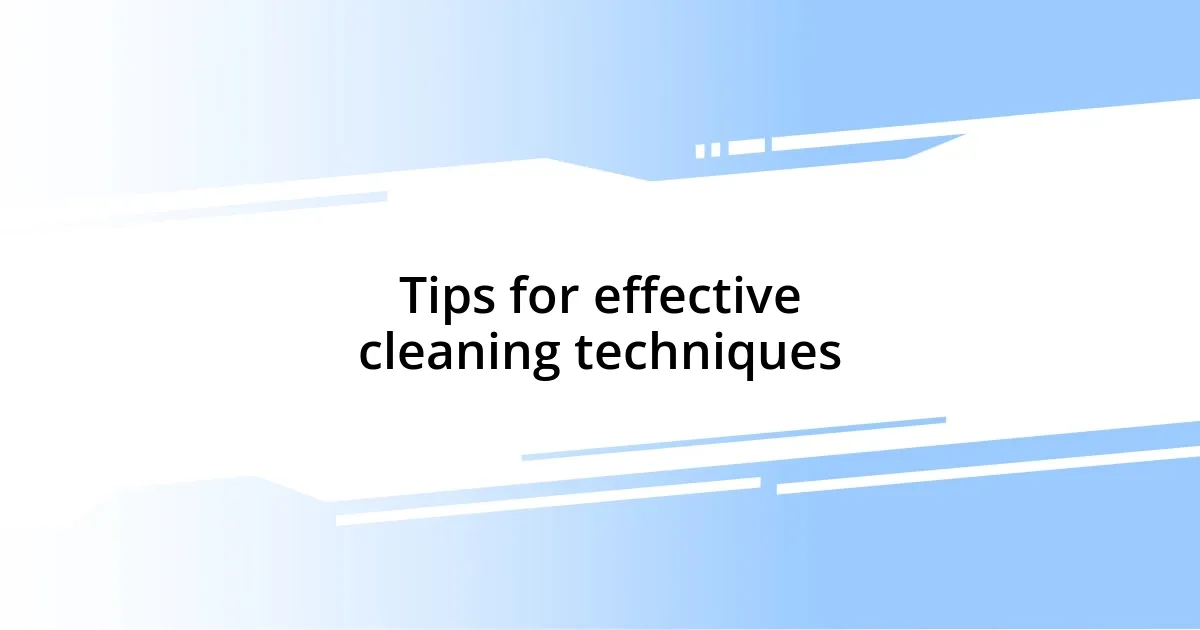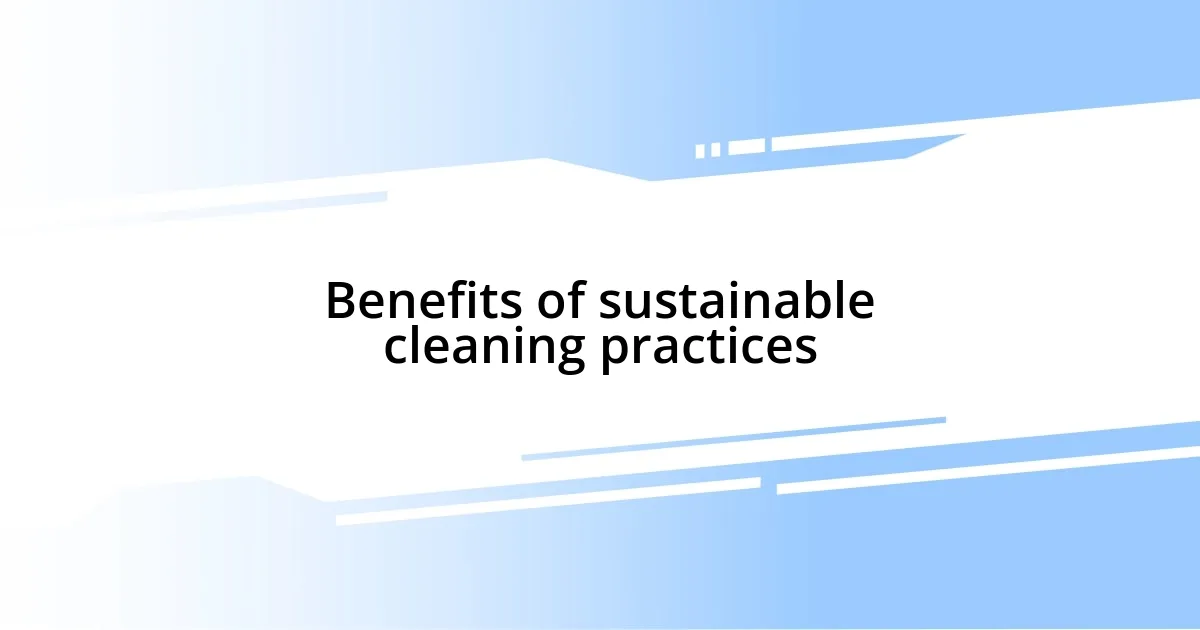Key takeaways:
- Many chemical cleaning products contain harmful substances that can affect health, prompting a shift towards safer, DIY alternatives.
- Essential ingredients for effective DIY cleaners include white vinegar, baking soda, castile soap, essential oils, and lemon juice.
- Establishing a cleaning routine, such as a top-to-bottom approach, enhances efficiency and satisfaction in cleaning tasks.
- Using sustainable cleaning practices offers health benefits, cost savings, and a positive environmental impact.

Understanding chemical cleaning products
Chemical cleaning products dominate our homes, often promising sparkling results with minimal effort. But have you ever stopped to think about what’s actually in those brightly colored bottles? I remember once cleaning my kitchen with a popular all-purpose spray, only to be overwhelmed by the harsh smell that lingered long after I wiped the counters. It made me wonder: what am I exposing my family to?
As I learned more about these products, I found that many contain ingredients that can cause skin irritation or even respiratory issues. I recall a friend who developed a persistent cough after repeatedly using a certain brand’s cleaners. It raised a crucial question for me: are we prioritizing cleanliness over our health?
Many people aren’t aware that the long ingredients lists often hide potentially harmful substances beneath complex chemical names, making it challenging to gauge their safety. I realized that when I switched to reading labels and researching ingredients, I felt more empowered in my cleaning choices. I ask you: wouldn’t you prefer cleaning methods that keep your home safe without sacrificing effectiveness?

Essential ingredients for DIY cleaners
When I first ventured into the realm of DIY cleaners, I was amazed by how simple ingredients could work wonders. It felt liberating to know that I didn’t need a cupboard full of chemical-laden products to maintain a clean home. Instead, I started gathering a few basic staples that not only effectively cleaned but also left my place smelling fresh and natural.
Here are some essential ingredients that I found to be game-changers in my DIY cleaning journey:
- White vinegar: A natural disinfectant that tackles grime and odors.
- Baking soda: Perfect for scrubbing surfaces and neutralizing odors.
- Castile soap: A versatile soap derived from plants, great for a variety of cleaning tasks.
- Essential oils: For added fragrance and antibacterial properties—lavender and tea tree oil are my go-tos.
- Lemon juice: A powerful stain remover and brightener, plus it smells amazing!
With such a modest list, I realized I could whip up effective cleaners without the risk of exposing my family to harsh chemicals. Each time I mixed my concoctions, I felt a sense of achievement, knowing I was making healthier choices for our home.

Step-by-step DIY cleaning recipes
Once I started experimenting with DIY cleaning recipes, I was pleasantly surprised by how straightforward the process could be. For my homemade all-purpose cleaner, I mixed equal parts of white vinegar and water in a spray bottle. I remember the first time I used it; I tackled my bathroom tiles, and to my delight, they sparkled without a trace of chemical residue. It reminded me of the joy of simple solutions that are both effective and safe for my family.
For those tougher jobs, I often turned to baking soda. I’d sprinkle it on my kitchen counters and add a few drops of lemon juice to create a powerful paste. When I scrubbed the surfaces, I felt a sense of nostalgia—my grandmother used to do the same with her home remedies. The fizzing sound brought back fond memories, and I realized that cleaning in a more natural way connects me not only to my home but to my roots.
To give you an overview of the effectiveness of various DIY recipes, here’s a comparison of some common swaps for store-bought cleaners:
| DIY Recipe | Effectiveness |
|---|---|
| All-Purpose Vinegar Cleaner | Great for general surfaces, disinfects |
| Baking Soda and Lemon Paste | Excellent for tough stains and scrubbing |
| Castile Soap Dish Soap | Effective for dishes, safe and natural |

Tips for effective cleaning techniques
I’ve found that setting a cleaning routine can make all the difference in effectively maintaining a clean home. When I began tackling my chores in a structured way, using a checklist not only kept me organized but also turned cleaning into a more satisfying ritual. I often wondered, how could something that seemed tedious transform into a source of pride? It was all about making a plan and sticking to it!
One technique that revolutionized my cleaning sessions was the “top-to-bottom” approach. I always start my dusting and wiping at the highest points of a room, gradually working down to the floors. This method allowed me to avoid re-cleaning surfaces and made me feel like I had a game plan in place. I remember one time, mid-clean, discovering years of dust hiding on the top shelves. That moment made me realize how much I’d been missing—cleaning truly became a mini-adventure!
Additionally, I believe in the power of natural scrubbing pads. Using a damp cloth or a reusable sponge enhances the effectiveness of my DIY cleaning solutions. I vividly recall one particularly stubborn stain on my kitchen counter that I thought would never budge. Armed with my trusty baking soda paste and a natural sponge, I scrubbed away and was met with triumph as the counter gleamed again. It’s fascinating to think how simple tools and techniques can lead to such satisfying results. Have you experienced that kind of satisfaction with your cleaning efforts? If you haven’t yet, I encourage you to try these techniques—it’s incredible what you can achieve!

Maintaining a chemical-free home
Maintaining a chemical-free home requires dedication and a few strategic habits. In my experience, one of the easiest ways to ensure sustainability is to keep my DIY cleaning supplies conveniently located around the house. I use small spray bottles filled with my homemade all-purpose cleaner in high-traffic areas, like the kitchen and bathroom. It’s such a small thing, but honestly, having those solutions readily available has made cleaning feel less like a chore and more like a quick remedy when I need them.
Another critical aspect is how you approach managing clutter. I’ve discovered that a cleaner space translates to a cleaner mind—and a chemical-free one at that! For example, I set aside a few minutes every day to tidy up and put things back in their place. This simple yet effective habit not only makes cleaning easier but also reinforces my commitment to using natural products. Doesn’t it feel good to walk into a tidy room that’s free of harsh chemical odors?
Lastly, I can’t stress enough the importance of involving the whole family. When my kids helped me mix those cleaning solutions, it became a bonding activity rather than a chore. We turned the process into a fun little science experiment, measuring and mixing together. This not only teaches them the benefits of going green but also instills a sense of pride in caring for our home. Have you tried involving your family in your cleaning routine? Making it a team effort really can change the dynamic!

Benefits of sustainable cleaning practices
Embracing sustainable cleaning practices has truly transformed my home environment. One of the most rewarding aspects is the peace of mind that comes from using products free of toxic chemicals. I distinctly remember a day when my youngest was sensitive to certain scents, and after switching to my natural cleaners, the lingering cough disappeared. Isn’t it remarkable how something as simple as what’s in your cleaning supplies can impact your health?
Additionally, I’ve noticed substantial savings by opting for eco-friendly cleaning solutions. By making my own cleaners with basic ingredients like vinegar and baking soda, I’ve eliminated the need to buy specialized products, which can be surprisingly costly. I can almost recall the first time I made a large batch of all-purpose cleaner and realized how little money I spent compared to my usual purchases. It felt liberating! Have you considered how much you might save by switching to sustainable practices yourself?
Finally, I can’t overlook the positive environmental impact of using green cleaning products. Knowing that my choices help reduce plastic waste and chemical runoff gives me a sense of purpose. I often think about the future—what kind of world do we want to leave for the next generation? Reflecting on these questions compels me to continue my journey toward sustainability, and I hope it inspires you too. Wouldn’t you agree that every small change counts?














